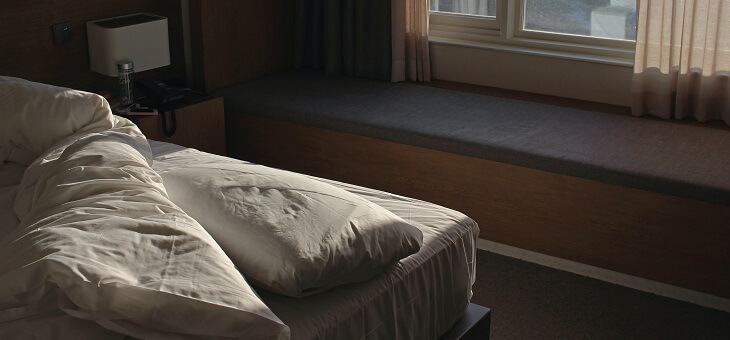Bed bugs are the common name for Cimex lectularius, a flat, louse-like insect that lives off the blood of other animals. They can be hard to spot, especially when hiding in dark, hard to reach places.
While they don’t transmit any diseases, they can leave nasty, itchy bites that are highly uncomfortable.
All hostels, hotels and guesthouses are at risk of a bed bug infestation, so grab a flashlight and inspect your room before you settle down.
Read: 15 things that make you a dreadful hotel guest
As soon as you arrive in your room, drop your belongings in a safe place such as the bathroom where it’s hard for bedbugs to hide on tile surfaces. Avoid the luggage rack, where the bugs can stay after coming in on another traveller’s bag.
The most obvious spot to look for bed bugs is in the bed, but spotting them is a little more involved than just picking the mattress up and looking for dark spots. Bed bugs tend to hide in the joints of the frame and along the slats so inspect those with a flashlight first. Then look in the crevices of the headboard.
Next, pull the blanket and linens off the bed and inspect the mattress seam and zipper. Examine the corners, where bed bugs like to hide. Adults, nymphs, and eggs are all visible to the naked eye but don’t just look out for the bugs themselves. Exoskeletons (casings that the bugs leave behind when they moult) and dark, rust-coloured spots are both signs bed bugs leave behind.
If the corners are clear, pick up the mattress and look under it.
Read: Is your hotel really clean?
Make sure you check any upholstered furniture too. Take a look around the seams, inside the coverings, and along the zippers of the sofa cushions and any decorative pillows.
If these areas are free of the creepy crawlies, hopefully you’re in the clear. But before you start to unpack, check the closet – the dark corners are popular hangouts for bed bugs.
Look at the seals of the doors and drawers, as well as the joints and corners of the closet. Check the spots where floorboards or floor moulding meet the wall.
Almost anywhere you might find a spider web, you might also find bed bugs.
Next, go around the room and check inside any lampshades, picture frames, alarm clocks, or any other bedside decor. The spot where a lamp makes contact with a nightstand is another popular hangout.
Finally, look at the webbing on the luggage stand, especially where it wraps around the frame. If it looks clear, you can safely relocate your luggage from the bathroom.
Read: New cleaning standards for hotels
If you see any telltale signs, tell hotel staff and ask for a new room, preferably in another part of the building.
Have you ever had an experience with bed bugs? Do you check hotel rooms for these signs? Let us know in the comments section below.
If you enjoy our content, don’t keep it to yourself. Share our free eNews with your friends and encourage them to sign up.

